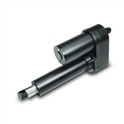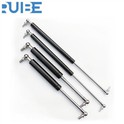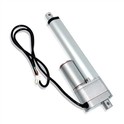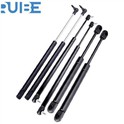Hey there! As a supplier of Bonnet Gas Springs, I often get asked whether these things are safe to use. It's a super important question, and I'm gonna break it down for you in this blog post.
First off, let's talk about what Bonnet Gas Springs are. They're those nifty little devices that help you lift and hold up the bonnet of a vehicle. You know, when you pop the hood to check the engine, it's the gas springs that keep it from slamming back down on you. They work by using compressed gas to provide a smooth and controlled motion.
Now, to answer the big question: Are Bonnet Gas Springs safe to use? The short answer is yes, they are generally safe. But like any mechanical device, there are some factors to consider to ensure their safe operation.


How Bonnet Gas Springs Work
Bonnet Gas Springs are essentially cylinders filled with nitrogen gas and a small amount of oil. The gas is compressed, and when you apply force to the spring, it compresses even more, storing energy. When you release the force, the compressed gas expands, pushing the piston out and providing the lifting force. This mechanism allows for a smooth and controlled movement of the bonnet.
Safety Features
Most modern Bonnet Gas Springs come with several safety features. For example, they have a pressure relief valve that prevents the gas pressure from getting too high. If the pressure inside the spring exceeds a certain limit, the valve will open, releasing some of the gas and preventing the spring from bursting.
Another safety feature is the locking mechanism. Some gas springs have a built - in lock that keeps the bonnet in place once it's opened. This is especially useful when you're working under the bonnet and don't want it to accidentally close.
Quality and Installation
The safety of Bonnet Gas Springs also depends on their quality and proper installation. As a supplier, I always emphasize the importance of using high - quality gas springs. Cheaper, low - quality springs may not have the same safety features or may wear out more quickly, increasing the risk of failure.
Proper installation is equally crucial. If the gas springs are not installed correctly, they may not function properly, which can lead to safety issues. For example, if the mounting points are not secure, the spring could come loose during use, causing the bonnet to fall suddenly.
Maintenance
Regular maintenance is key to ensuring the safety of Bonnet Gas Springs. You should inspect the springs regularly for any signs of damage, such as leaks, dents, or corrosion. If you notice any of these issues, it's important to replace the springs immediately.
Also, make sure to keep the springs clean. Dirt and debris can accumulate on the piston and inside the cylinder, which can affect the performance of the spring. A simple wipe - down with a clean cloth can go a long way in maintaining the spring's functionality.
Potential Risks
While Bonnet Gas Springs are generally safe, there are still some potential risks. One of the main risks is a sudden failure of the spring. This can happen due to a manufacturing defect, wear and tear, or improper use. If a spring fails while the bonnet is open, it can cause the bonnet to fall rapidly, which can be dangerous.
Another risk is overloading the spring. Each gas spring has a specific weight capacity, and if you try to use it to lift a bonnet that is too heavy, it can put excessive stress on the spring, increasing the risk of failure.
Other Applications of Gas Springs
Gas springs aren't just used for bonnets. They have a wide range of applications. For example, you can check out our Murphy Bed Gas Spring which is used in Murphy beds to help with the easy lifting and lowering of the bed. There's also the Gas Spring for Tool Box, which makes it convenient to open and close tool boxes. And if you're into furniture, our Gas Spring for Furniture can be used in various furniture pieces to provide smooth movement.
Conclusion
In conclusion, Bonnet Gas Springs are generally safe to use when they are of high quality, properly installed, and maintained. However, it's important to be aware of the potential risks and take the necessary precautions. As a supplier, I'm always here to help you choose the right gas springs for your needs and provide you with all the information you need to ensure their safe use.
If you're interested in purchasing Bonnet Gas Springs or any of our other gas spring products, feel free to reach out for a procurement discussion. We can talk about your specific requirements, and I'll do my best to offer you the best solutions.
References
- Automotive Gas Spring Handbook
- Industry standards for gas spring manufacturing and safety






